Dulce Vivir, Honduras Trips
March 2008: Trip #1
Water quality and health data were collected, a picture project was completed to determine what problems in the community the residents most wanted to improve, and the whole community met with EWB-UMaine to discuss concerns and to prioritize needs. Water quality tests confirmed fecal contamination in the water. A pressing problem that could be addressed immediately was flooding, so a survey was made and a drainage plan was developed to divert the runoff from the surrounding hills around – rather than through – the community. This was immediately implemented and has improved conditions significantly.
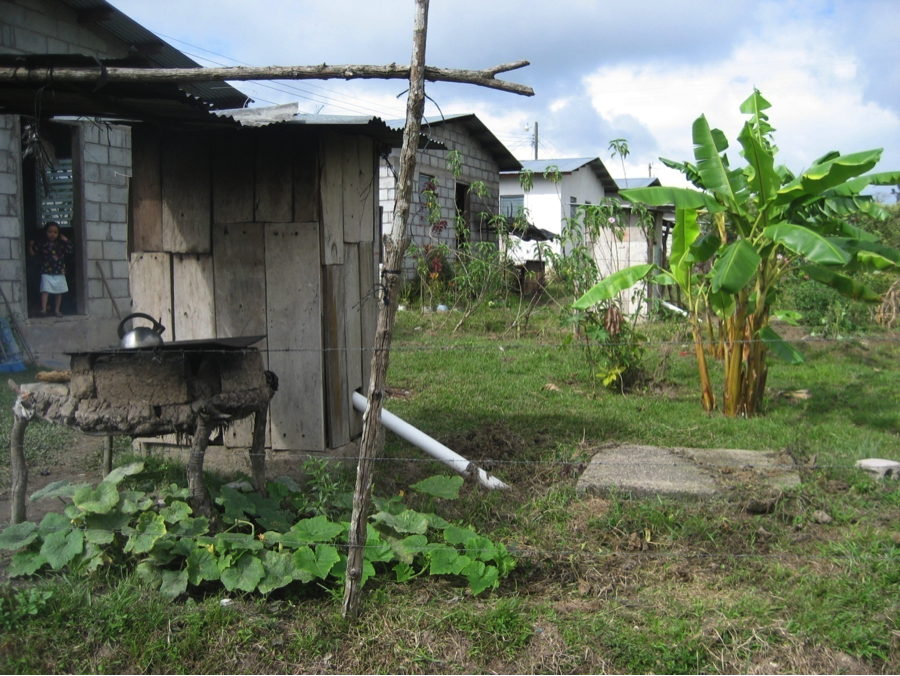
March 2009: Trip #2
Mentor: Kyle Coolidge
The community members discussed sanitation options and agreed on a disposal option. EWB-UMaine members also met with officials to obtain all of the appropriate permits, and drafted a memorandum of understanding with the community of Dulce Vivir and the mayor of Dulce Nombre outlining the responsibilities of all parties.
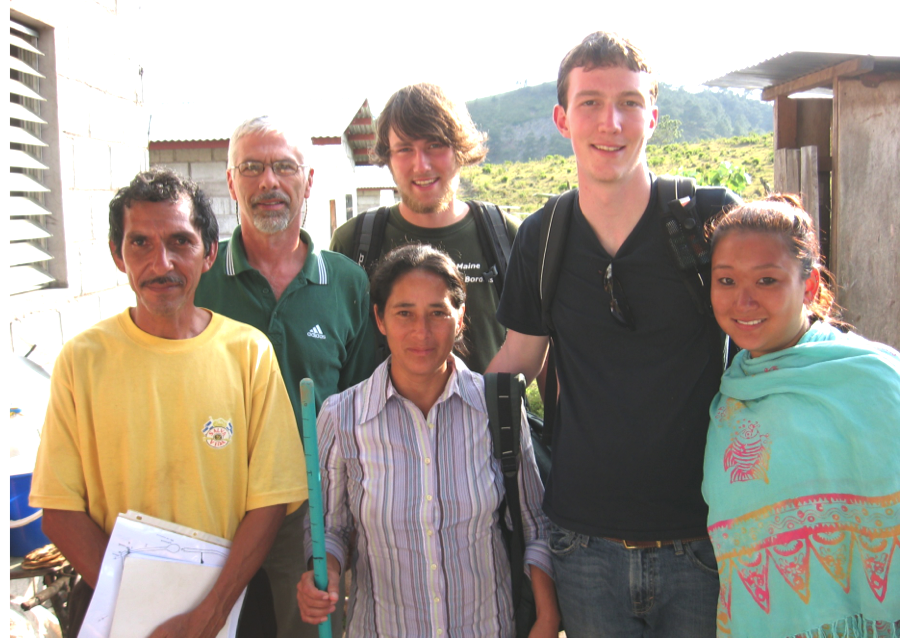
March 2010: Trip #3
March 2010: Trip #3
Mentors: Mark Jordan and Al Frick
Survey data was collected that was needed to complete the design and several material suppliers for the construction were found.
Matt Verbyla facilitated introductions to several government officials (Mario from SERNA and Angel Prado from the mancommunidad Consejo Intermunicipal Hignito), and the lack of permit requirements was ascertained, as the project did not need a SERNA permit, just a UMA Permit. SERNA is the equivalent to the US EPA and Consejo Intermunicipal Hignito is an inter-municipal organization that performs and/or manages public works construction projects in 13 municipalities around Santa Rosa, including Dulce Nombre. On this trip, EWB-UMaine also tried out the Gulper, which is a back up manual pump for septic tank pumping. Mike Parker built the butterfly valve, which is the component the community would need to recreate if the materials were pillaged.
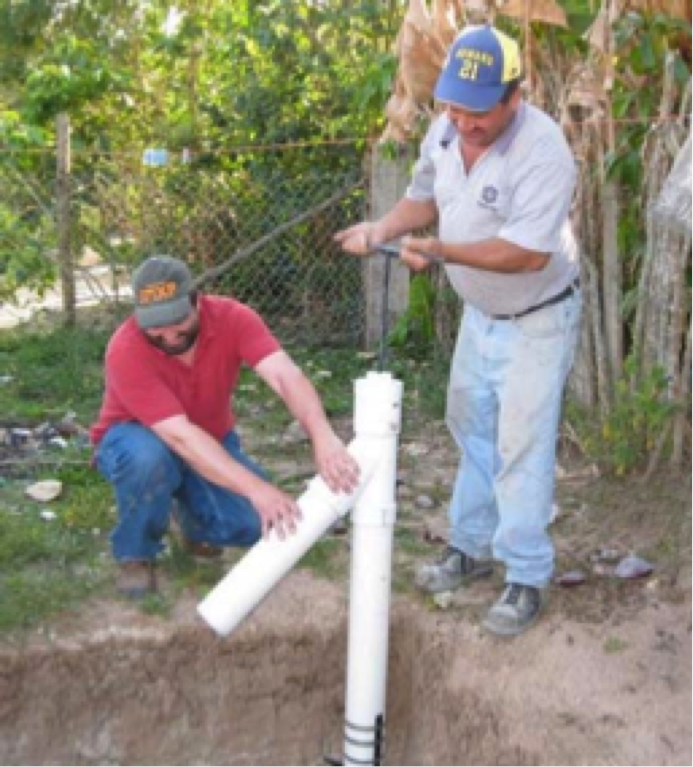
August 2010: Trip #4
Mentors: Al Frick and Karen Merritt
More surveying was conducted and soil and groundwater table testing was carried out. Nice work was completed on the community calendar and many pictures were taken during this trip. A fair amount of work was done with kids in the area. Sean scouted out land application sites, and got an agreement from the mayor on the location of a town-owned site. Al checked out the site soil conditions.
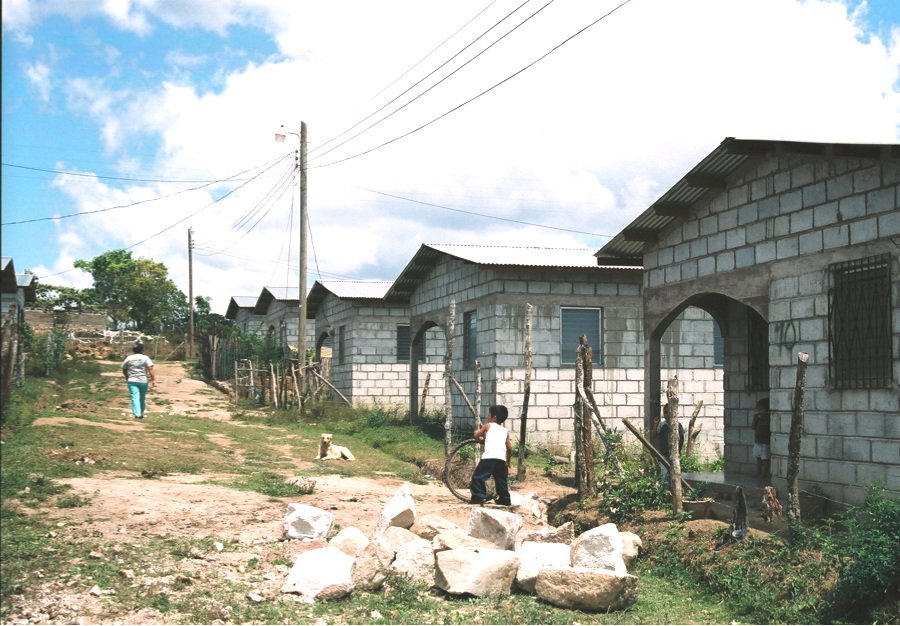
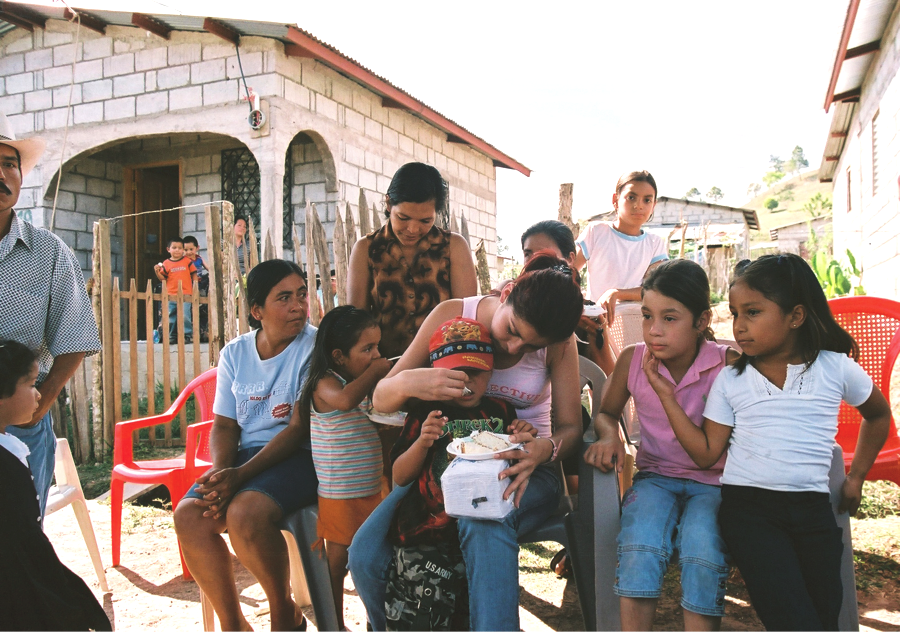
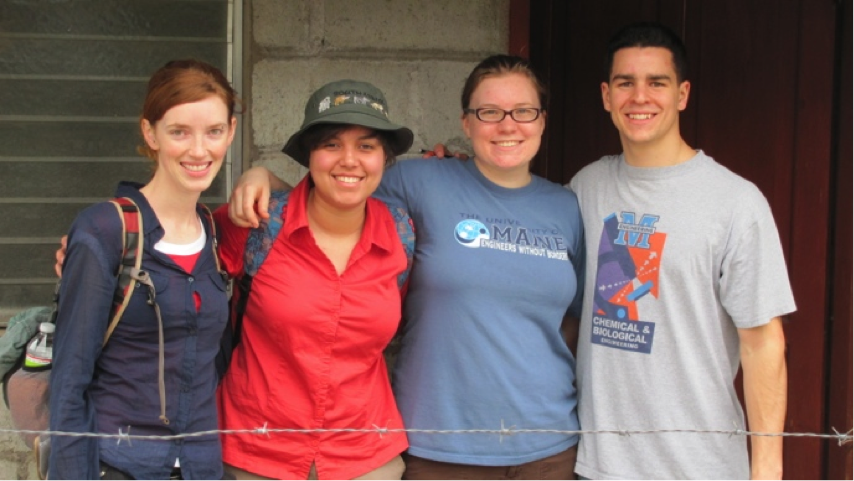
March 2011: Trip #5
Mentors: Brendan McGuirl and Kyle Coolidge
The collection system was completed and the leach field site was prepared. The team discovered some previous surveying errors and had to re-design the collection system. Due to unfortunate rains, the fact that more materials than expected were needed, and the rush at the end of the trip, some piping was installed at the wrong elevation and this then had to be fixed on the next trip.
March 2012: Trip #6
The septic tanks were installed and the leach field was constructed. The team managed to complete the majority of the planned work, including fixes to problems from before, but with no time to spare. There was no time for maintenance training, and very little opportunity to ensure that the Operations & Maintenance team in the community was prepared.
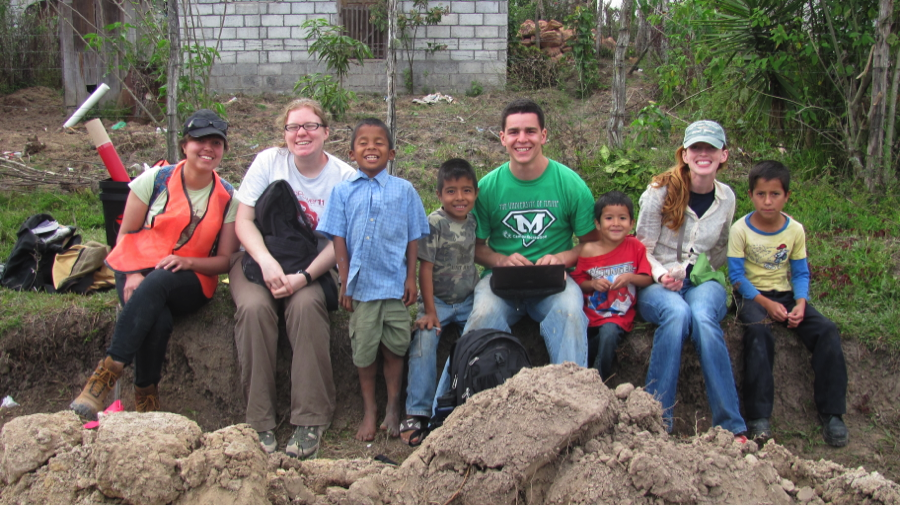
March 2013: Trip #7
Mentors: Jim Fitch and Edwin Nagy
Translator: Joanna Miller
UMaine fixed glitches in collection system, cleaned Zabel filters, daylighted curtain drain, and made an emergency relief drain. Also, a shed to house the pump and trailor for the tanks was constructed by members of the Dulce Vivir community led by Alberto Alberado EWB-UMaine worked with the Operations and Maintenance team in the community to empty the tanks and figure out the best way to do this procedure. In the process, they worked out maintenance kinks and the schedule for pumping. Water quality data, both of the tap water and surrounding environmental samples, was tested, and a health and satisfaction survey was given to most community members.
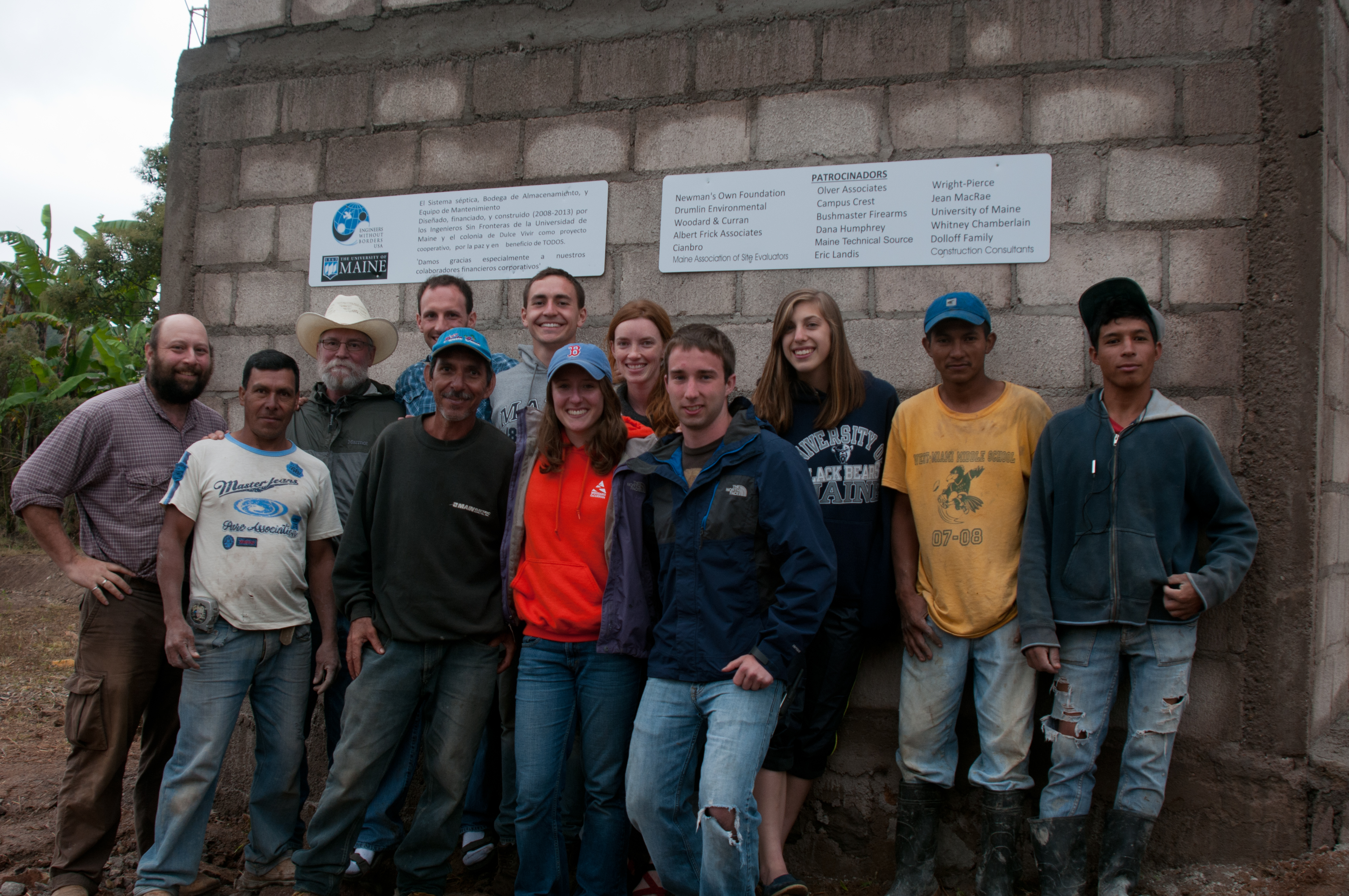
March 2008: Trip #1
Mentor: Robert Sypitkowski
Water quality and health data were collected, a picture project was completed to determine what problems in the community the residents most wanted to improve, and the whole community met with EWB-UMaine to discuss concerns and to prioritize needs.
Water quality tests confirmed fecal contamination in the water. A pressing problem that could be addressed immediately was flooding, so a survey was made and a drainage plan was developed to divert the runoff from the surrounding hills around – rather than through – the community. This was immediately implemented and has improved conditions significantly.
Follow-up work
Mike Parker (EWB-UMaine member at the time) returned to Dulce Nombre on his own a few months later while he was in country for intensive Spanish language training. He collected more health survey data and observed that the drainage system had been put in place.
